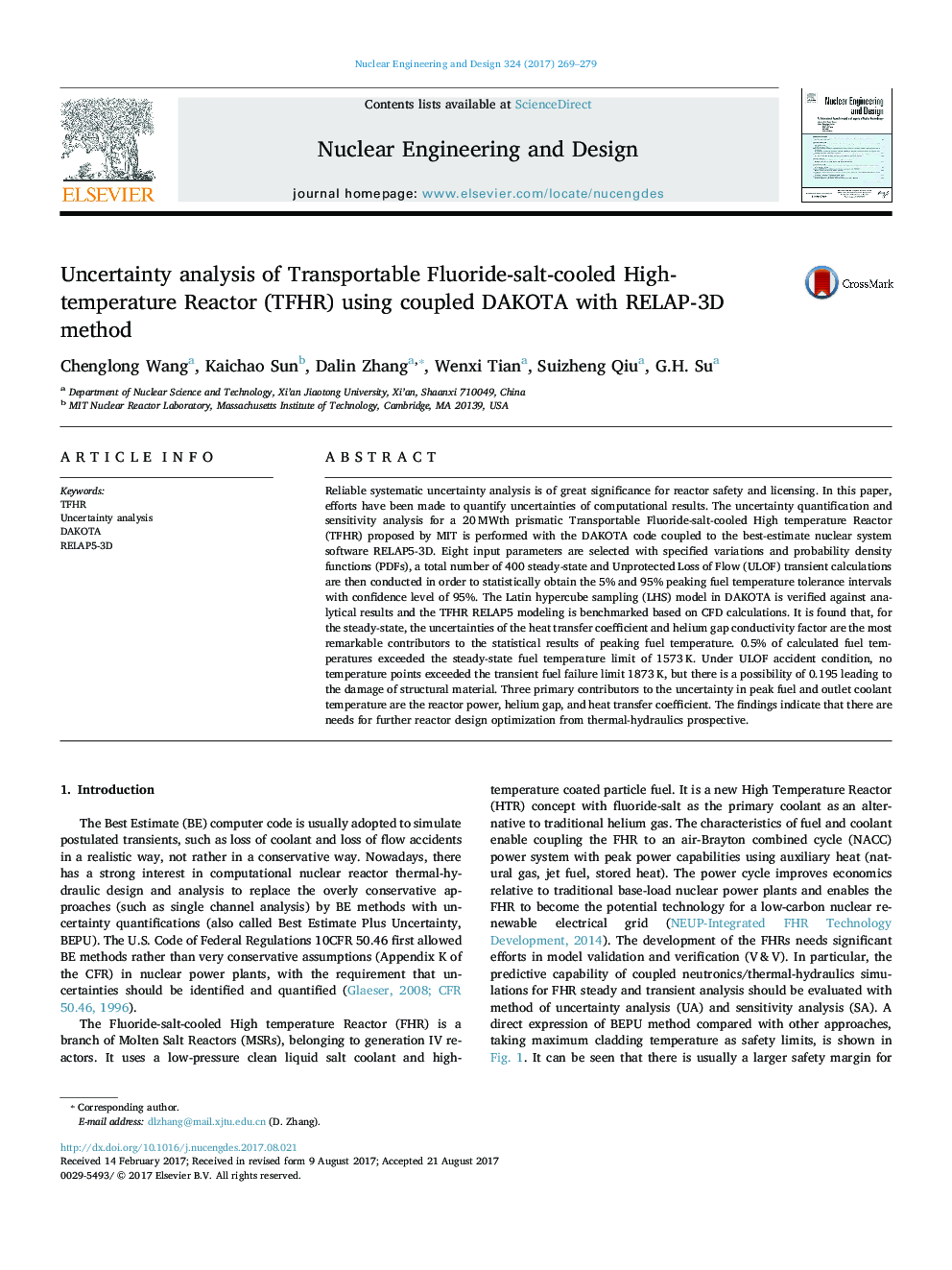| کد مقاله | کد نشریه | سال انتشار | مقاله انگلیسی | نسخه تمام متن |
|---|---|---|---|---|
| 4925373 | 1431397 | 2017 | 11 صفحه PDF | دانلود رایگان |
عنوان انگلیسی مقاله ISI
Uncertainty analysis of Transportable Fluoride-salt-cooled High-temperature Reactor (TFHR) using coupled DAKOTA with RELAP-3D method
دانلود مقاله + سفارش ترجمه
دانلود مقاله ISI انگلیسی
رایگان برای ایرانیان
موضوعات مرتبط
مهندسی و علوم پایه
مهندسی انرژی
مهندسی انرژی و فناوری های برق
پیش نمایش صفحه اول مقاله

چکیده انگلیسی
Reliable systematic uncertainty analysis is of great significance for reactor safety and licensing. In this paper, efforts have been made to quantify uncertainties of computational results. The uncertainty quantification and sensitivity analysis for a 20Â MWth prismatic Transportable Fluoride-salt-cooled High temperature Reactor (TFHR) proposed by MIT is performed with the DAKOTA code coupled to the best-estimate nuclear system software RELAP5-3D. Eight input parameters are selected with specified variations and probability density functions (PDFs), a total number of 400 steady-state and Unprotected Loss of Flow (ULOF) transient calculations are then conducted in order to statistically obtain the 5% and 95% peaking fuel temperature tolerance intervals with confidence level of 95%. The Latin hypercube sampling (LHS) model in DAKOTA is verified against analytical results and the TFHR RELAP5 modeling is benchmarked based on CFD calculations. It is found that, for the steady-state, the uncertainties of the heat transfer coefficient and helium gap conductivity factor are the most remarkable contributors to the statistical results of peaking fuel temperature. 0.5% of calculated fuel temperatures exceeded the steady-state fuel temperature limit of 1573Â K. Under ULOF accident condition, no temperature points exceeded the transient fuel failure limit 1873Â K, but there is a possibility of 0.195 leading to the damage of structural material. Three primary contributors to the uncertainty in peak fuel and outlet coolant temperature are the reactor power, helium gap, and heat transfer coefficient. The findings indicate that there are needs for further reactor design optimization from thermal-hydraulics prospective.
ناشر
Database: Elsevier - ScienceDirect (ساینس دایرکت)
Journal: Nuclear Engineering and Design - Volume 324, 1 December 2017, Pages 269-279
Journal: Nuclear Engineering and Design - Volume 324, 1 December 2017, Pages 269-279
نویسندگان
Chenglong Wang, Kaichao Sun, Dalin Zhang, Wenxi Tian, Suizheng Qiu, G.H. Su,